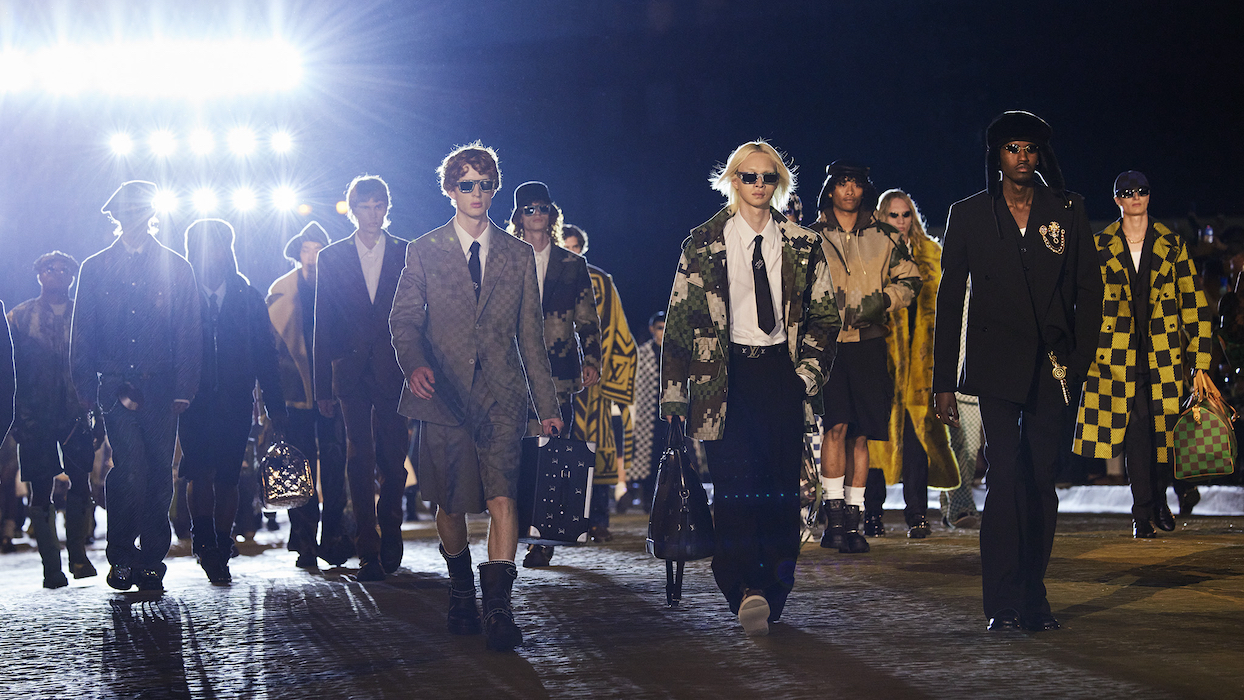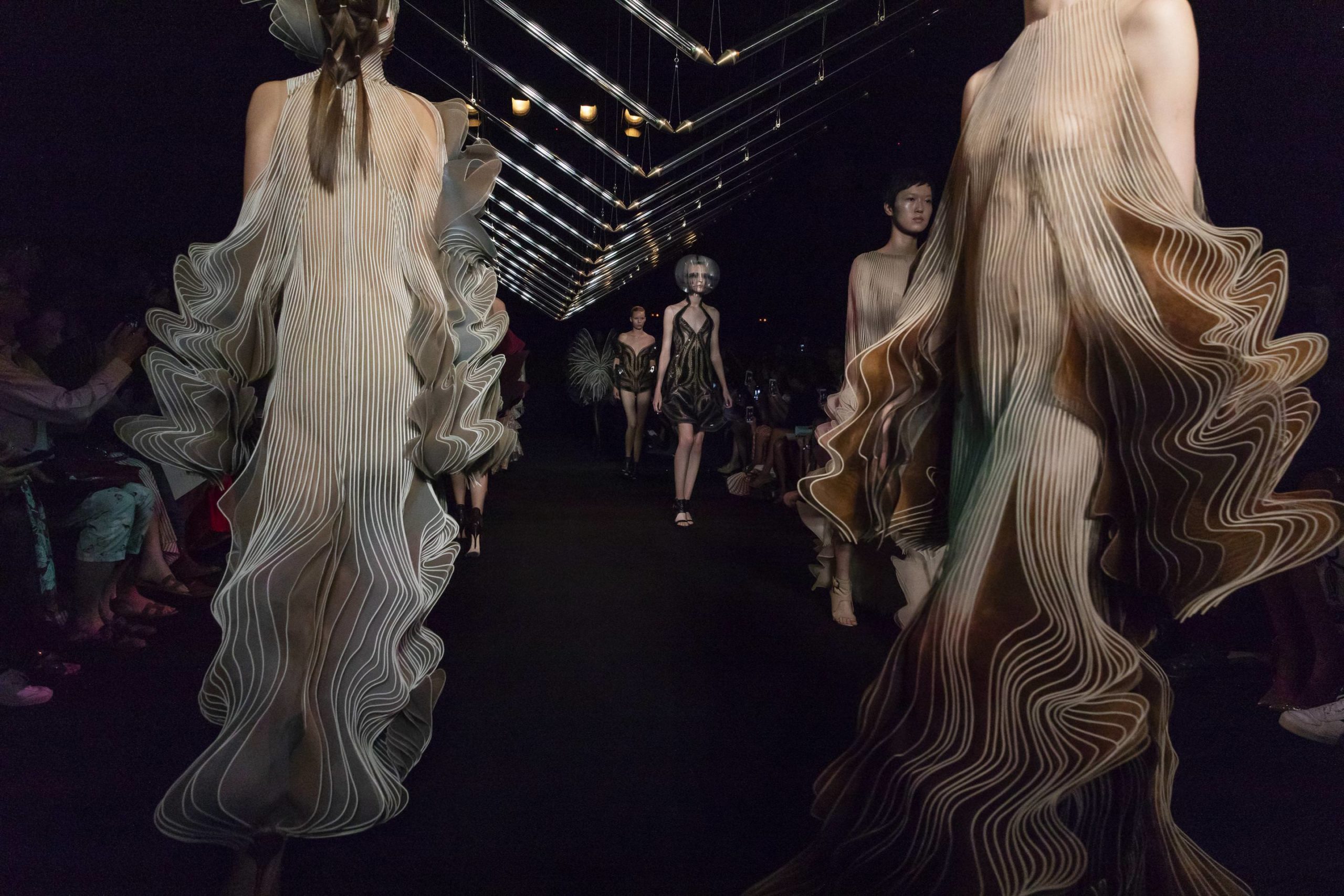Lisa Von Tang Fashion is filled with escapism and sustainability
Lisa Von Tang knew she wanted to be a fashion designer as a child, choosing it as a path of escapism embedded with creativity and wonder. Through sketches of costumes, gala gowns, and fantastical suits, she formed a personal point of view of aesthetics, imagining a Utopian life full of women as superheroes. “My grandfather was a Chinese watercolor painter, and we were taught from a young age to paint and draw,” she told Whitewall recently. “So understanding technique, visual expression, and scale came very easily to me.”
After childhood, she explored professions in biochemistry, academia, and political philosophy. “I started off in sciences because I was good at it and like most immigrant parents, my mom hoped I would have a stable profession as a lawyer or a doctor,” she added. “I switched over my major to political science, and still have a deep love for analyzing different cultures and how we as humans, organize ourselves. Once I was ready, I decided to take a chance on myself by launching this brand that mixes many elements I care about—sustainability, east/west, masculine/feminine, power/vulnerability, activism/hedonism.”
In 2017, she launched her eponymous label, and its first fashion piece was a bomber jacket. Whitewall spoke with the designer about how her label weaves together style and sustainability, and how circular creation fosters a better tomorrow.
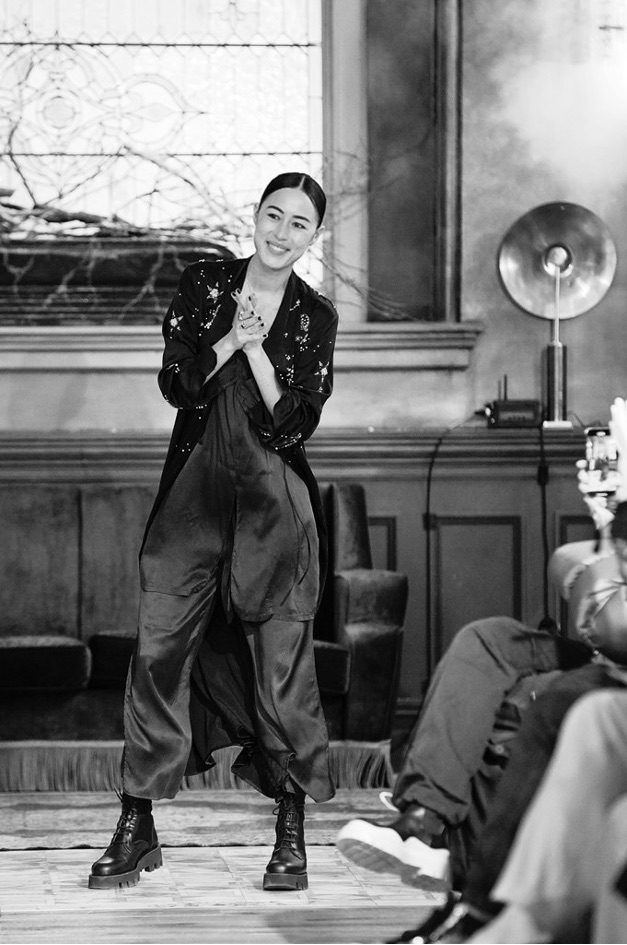
Courtesy of Lisa Von Tang.
WHITEWALL: You mentioned your first jacket was a bomber jacket. What was your first piece?
LISA VON TANG: I made color-popping jackets with mandarin buttons, and limited-edition silk lining. A jacket is an easy way to shift your outfit and your energy, by just popping it on top of basics. Our original bomber jacket was a fusion of being casual yet dressed up – They were statement yet effortless. These were a hit, and I developed my product mix from there. Today, we specialize in jackets, robes and kimono sets, and fun evening dresses.
WW: You mentioned with everything you design, there is a “yin” and a “yang.” How do you achieve this balance?
LVT: There needs to be a harmony in a piece, and for me this means ensuring that there are both feminine and masculine energies at play. For example, a pink feather robe made with rose petal fabric is flouncy, fun and feminine—and at the same time, a woman who has the courage to rock this is expressing a bold unapologetic confidence. She does life in her own way, regardless of how you may feel about it. Or, a silk pant suit—it can be structured and exaggerated at the shoulders and feel obviously powerful; but the silky texture, the flow of the wide pant legs, and the cinched waist also exudes sensuality and softness.
As women, this balance is a magical power for us to have. I am constantly learning how to take more effective action, as well as soften and have more capacity to appreciate and receive. I want our outfits to give remembrance to the full range of womanhood.
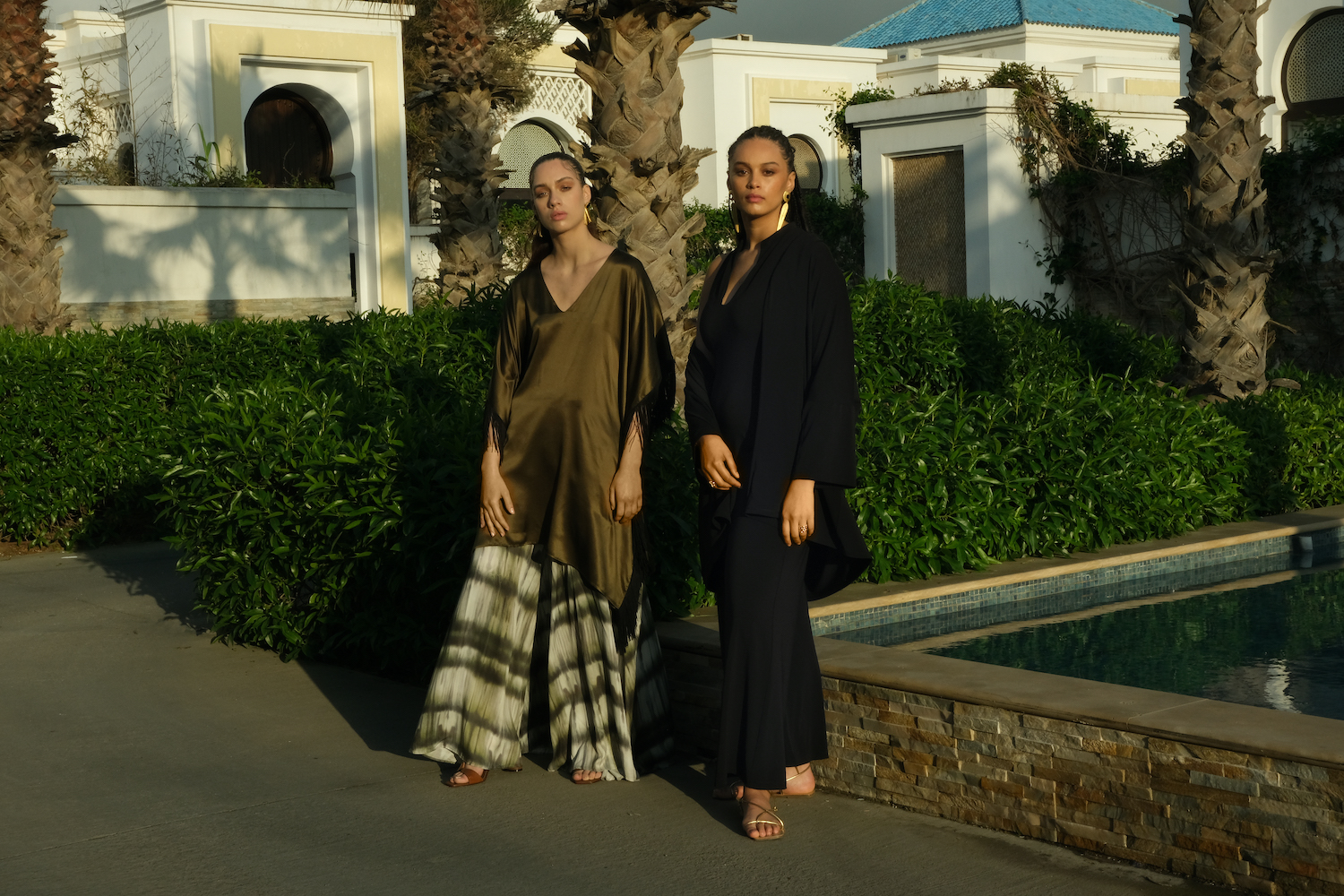
Courtesy of Lisa Von Tang.
WW: How do your pieces function as cultural medicine?
LVT: How humans have dressed over history has signaled relative power dynamics between classes, genders, ethnicities, and shows what is valued by a particular society at a certain time. These days when we’re creeping, we don’t check a man’s hat height but rather his watch.
To me, the best designers are ones who are not only designing for their time, but also for an era that they want to help bring in. Energies that I’d like to amplify in the world today are cultural diversity, sustainability, personal empowerment, and joie de vivre. I therefore use elements of Asia, confident sensuality and fun, comfort, and work with sustainable producers and suppliers.
I worry for trends that are poisonous for the earth, such as faux fur which is essentially plastic based—unless it is made from recycled nylon; which most are not. I also worry for trends that promote discomfort for women; for example body shaping corsets or painful heels – as I want my women to stomp down the streets with athletic mobility and pride! Her nimbleness and flexibility is healthy and sexy. I find it fascinating the silent signaling that occurs with fashion.
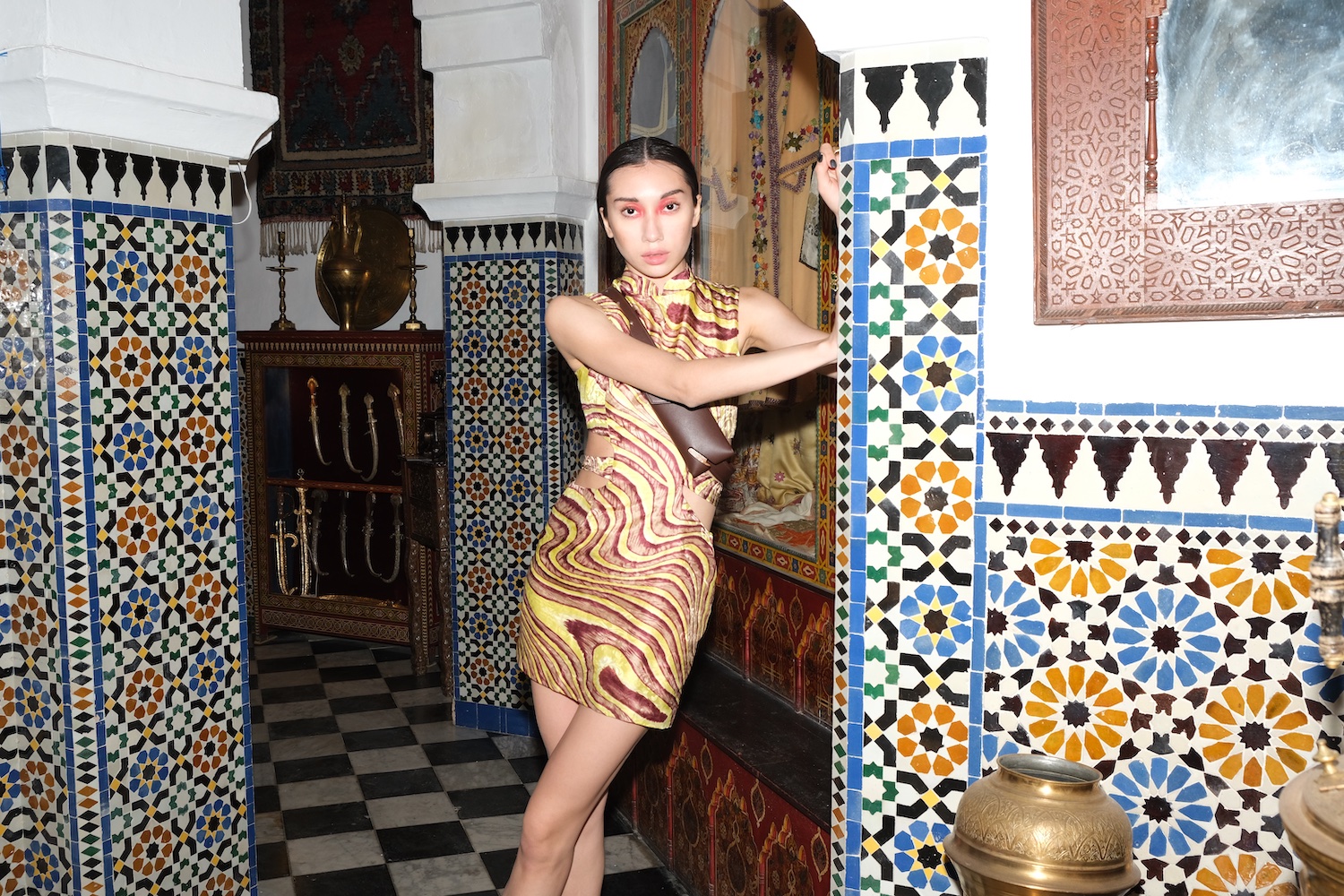
Courtesy of Lisa Von Tang.
WW: Your SS22 collection, “Made by Sunshine,” was produced in a solar-powered factory in Morocco, inspired by celebration, escape, and the embrace of our bodies at any age and any size. Can you tell us about this?
LVT: We produced with m360, a solar powered factory, a resort line that for the first time was made from size XS to XXXL. The collection utilizes eco-friendly materials like hemp, and I designed it in collaboration with Elena Miro, and Italian brand who specializes in premium plus sizing. Exploring extension sizing (available on the Elena Miro website) was important for me as we are also expanding outside of Asia now, and we want to cater to curvier fits.
It was important for me to create a resort collection that as highly versatile and inclusive for different ages and body types – because these are my women. My friends range from 25 – 67! They want to feel comfortable, and they are exquisitely unique, conscious souls, who love to explore the world. This is a collection for these women, who are adventurers.
WW: All of the original LVT pieces in the collection were made from biodegradable or eco-friendly materials such as hemp. Can you tell us a bit about your emphasis on innovative materials and why these in particular were interesting to work with this season?
LVT: We’ve used materials such as banana and rose petals (from crop waste) from Circular Systems, which won a global changemakers award, as well as hemp, bamboo, and recycled nylon from partner Inresst; recycled from ghost fish nets left in the ocean. We also have upcycled dead stock from textile factories and avoid using virgin materials as much as possible.
It is important for us to work with sustainable materials and be a part of the solution in our industry. In every collection, we try to work towards circular systems that are localized. For example, materials sourced from one country will then be assembled in that country; start to finish.
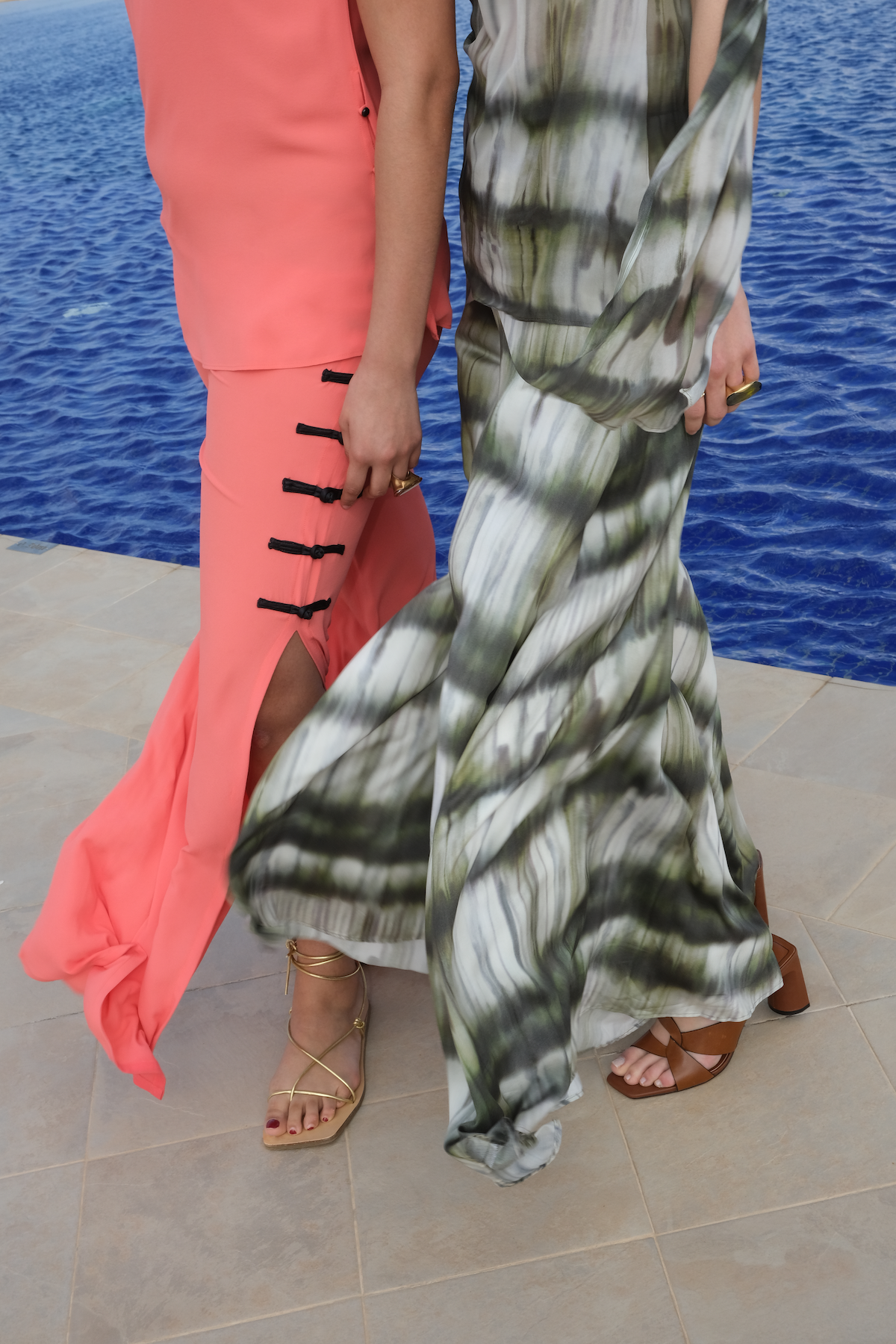
Courtesy of Lisa Von Tang.
WW: For the production of 23 new looks in the SS22 line, the brand collaborated with Elena Miro, which is known for its experience in curvy silhouettes. Why was this important? What was the result?
LVT: The collaboration line with Elena Miro was an exercise in understanding curvy fit. Our customers have historically been on the relatively petite size due to our base in Singapore. However, we now have significant numbers of customers across the US and Europe as well who require different fits. I was therefore keen to adjust our designs to extension sizing, which Elena Miro is a master in. For example, their top category is pants (usually a tough retail category) and it is precisely because they’ve perfected the fit for curvy women’s pants.
As this was the first time we used plus size models for our fittings, and collaborated with a European brand, the result is a collection that not only works for our traditional customer but can also be flattering on women sizes L-XXXL. On our site, we sell XS-XL, and on the Elena Miro site, the same collaboration is sold up to sizes XXXL. We are very proud of being able to make our label more inclusive.
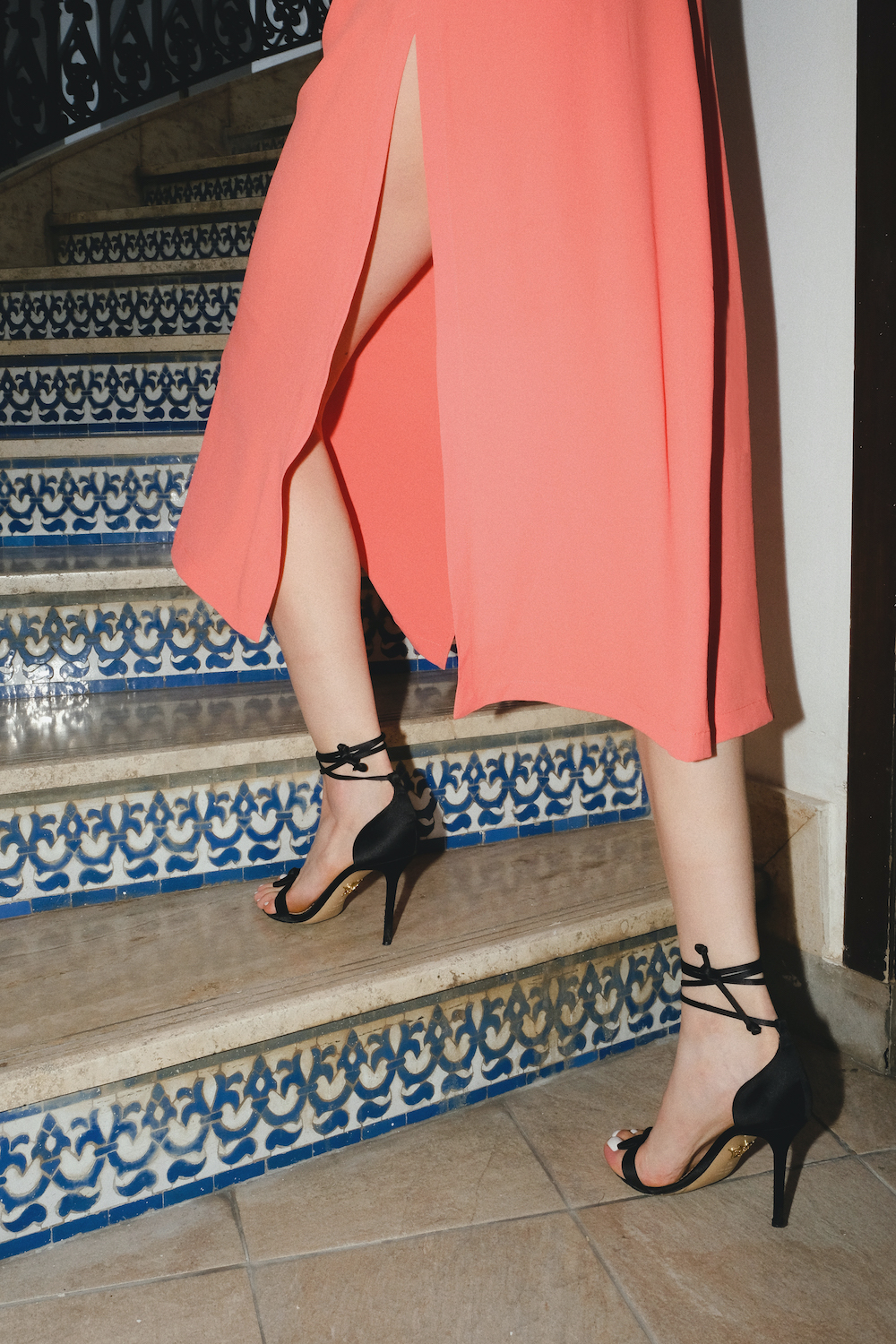
Courtesy of Lisa Von Tang.
WW: The craftsmanship behind your label hinges on a few touchpoints—Conception, Birth, Real Bodies, and Ethical Production—moving from a sketch to a responsibly made garment. Can you walk us through the steps in this process that are nonnegotiable (working with SEEX approved or FAMA-certified factories, recycling materials, using real models for fittings, etc.)?
LVT: We look for particular certifications when deciding to work with a factory that are internationally respected and known. These certifications cover sustainability and labor practices. For example, our partners have: GOTS (Global Organic Textile Standard) certification, which is the leading standard for the sustainable processing of textile products made from organically-farmed, natural fibers, such as organic cotton or organic wool. GRS (Global Recycle Standard) applies to companies using recycled material in products in compliance with environmental and social criteria throughout the supply chain.
We also work with partners that have Worldwide Responsible Accreditation Production (WRAP) which is the most widely-known certification for producers of clothing, footwear and accessories. The WRAP program certifies services on the basis of compliance with 12 requirements that ensure safe, lawful and ethically correct production processes. And SMETA, which is an acronym for “Sedex Members Ethical Trade Audit,” and was developed by the Sedex Associate Auditor Group (AAG) to provide a best practices and social compliance framework for the carrying out of audits and drawing up of related reports.
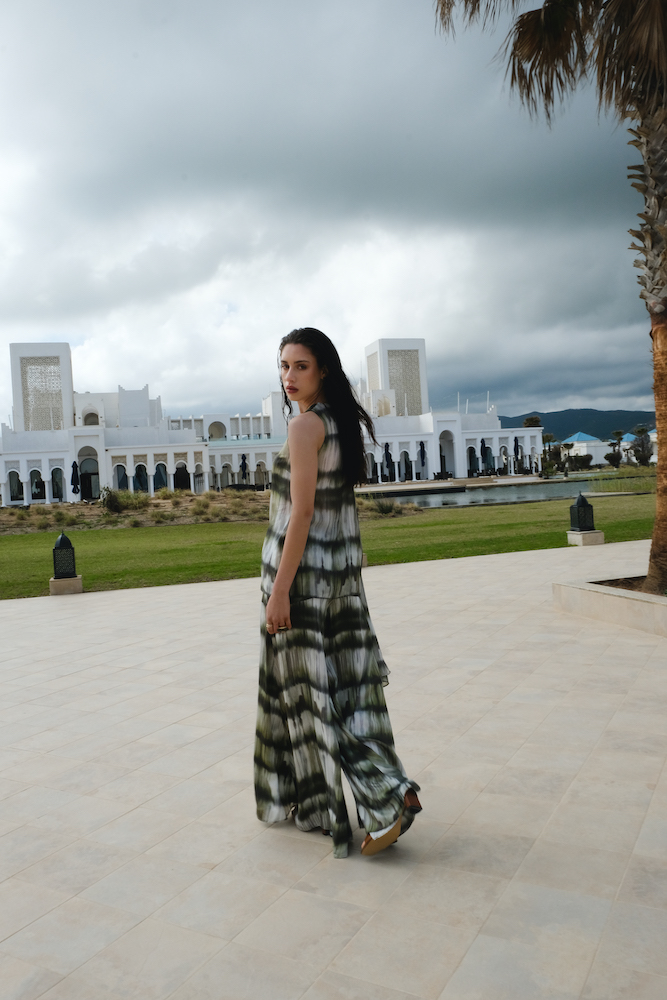
Courtesy of Lisa Von Tang.
WW: Specifically, can you tell us a bit about working with deadstock fabrics and upcycling materials?
LVT: For deadstock fabrics and upcycling, we work with different textile and leather suppliers to see what is leftover and how much quantity they have left. If it’s not much, for example the shearling that was used in our FW22 show, then we make the decision to produce a very limited run. For more premium categories, limited runs are okay and even desirable for us and our clients.
Instead of starting from a design and then choosing the fabric; for upcycling you often have to start with what is available, and then work the design from there. I love this circular creation—it gives us a sense of fulfillment to be utilizing ‘waste’. We’ve also upcycled from our own stock from past seasons—for example, there was a plain silk robe that didn’t sell well, so a few seasons later, we unpicked the robes and turned them into new puffer jackets.
WW: How do you personally practice sustainable or responsible living at home in Singapore? Does being based there impact your view of sustainable living and/or fashion production?
LVT: Being in Singapore is like living in any other urban center in terms of sustainability – it is not particularly eco-friendly, but it is trying to be. Beyond the basics of recycling and conscious consumption, I make use of local suppliers, reduce imported seafood and meat, and try to eat as locally as possible. For example, Edible Garden City grows local veggies and offers them in a fresh weekly box on subscription which I love.
WW: Can you tell us a bit about your personal work in philanthropy? (Singapore’s oldest NGO, Nature Society, and UN Women)?
LVT: Pre-Covid, we partnered with my favorite NGO in Singapore, Nature Society, and launched a limited edition scent line inspired by nature – with part of our profits going to their organization. They are Singapore’s oldest NGO, which tells you how much Singapore values the lush environment, but also continuously win transparency awards. I’ve done beach clean-ups with NS, climbing through mangrove forests to collect plastic trash, and also admired their experts from bird watching to botanists and learned so much about our biodiversity through them. For years UN Women/UNICEF functioned in Singapore and raised money through their annual Snow Gala, which we annually supported until they closed the Singapore chapter.
Today, with such a global existence involving continuous travel, I am trying to focus more on my own ‘backyard’ as I feel this is an area that is usually overlooked by do-gooders. It’s also an area that I can see what needs to be done, and real impact. I am realizing that the priority for sustainability should be hyper localization—everything must be seen holistically. For example, cowhides treated non-chemically are not bad for the environment and are by-products of the meat industry in many markets. They have been worn by ancient humans for millennia. Buying a poly-based faux leather, or a resin-backed vegan leather, might not be the best choice.
My point is that you have to know your own backyard, where there are surpluses and be creative with what choices you have there. I’m quite inspired by projects happening in Bali and Ibiza where groups of friends learn to use all aspects of their eco-system sustainably (eat the cow balls too!) and interweave their lives while also being open, global, citizens.





